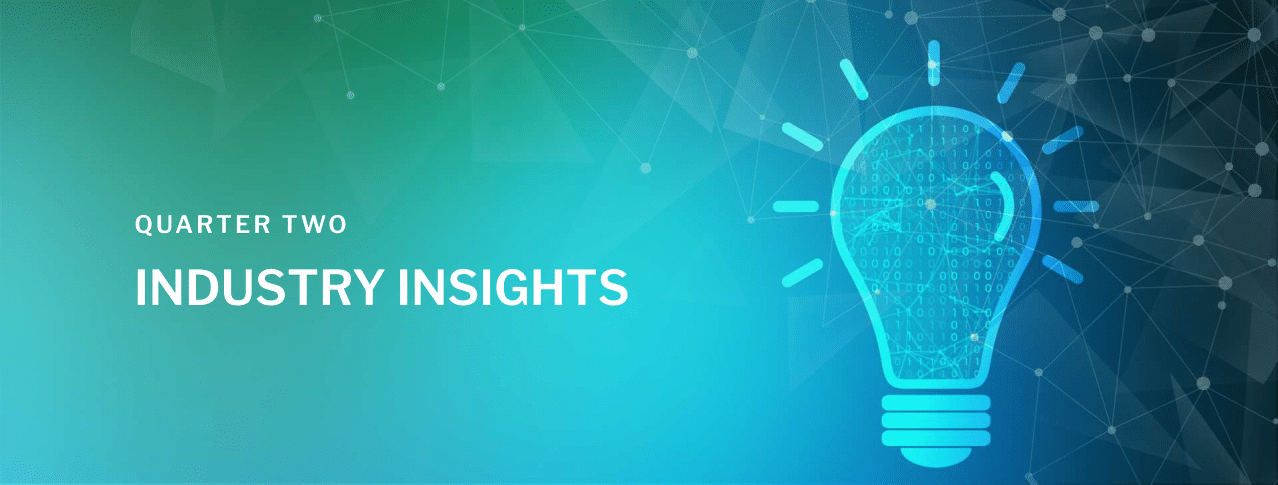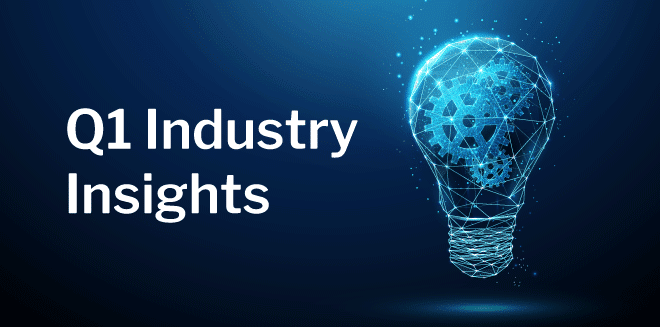
What’s going on in the economy? In Q2, Jamie Dimon advised to brace for an economic “hurricane”, a prominent black swan investor said the financial system is most vulnerable to “the greatest credit bubble of human history”, and Elon Musk had a “super bad feeling”.
As we wrap the second quarter and first half of 2022, we’re watching some key factors impacting consumers and the credit industry and making sense of what it might mean and how to prepare your business.
Key Factor 1: Inflation
Despite robust wage growth (average hourly earnings up 5.5% over last year), consumers are seeing those gains eroded by an 8.6% inflation rate in May, the highest in 40 years. The latest increase was driven by sharp year-over-year rises in the prices for energy (+34.6%), groceries (+11.9%) and shelter costs (+5.5%), an indicator of broad inflation pressures. In fact, rental prices across the nation hit a new record high—for the 15th month in a row, according to a recent Realtor.com report. Rents climbed 15.5% annually in May, to hit a median of $1,849 in the nation’s largest metropolitan areas.
As things get more expensive, cash flow gets trickier to manage. When consumers stretch their budgets to account for higher prices, cash previously used for discretionary spending and saving disappears. Case in point: U.S. inflation-adjusted consumer spending rose in April by the most in three months, while the personal savings rate dropped to 4.4%, the lowest since 2008 and down for the fourth straight month. This indicates that many consumers are spending more and saving less.
And what about the people who have been living paycheck to paycheck and haven’t been able to accumulate savings? According to a recent study, this group includes 70% of millennials, but also 51% of Gen X and 54% of baby boomers and seniors. While some consumers are able to dip into their savings at a time like this, for many others it means looking for new lines of credit, which could be challenging because of…
Key Factor 2: Interest Rate Hikes
After another rate hike in June, the federal interest rate sits at 1.5-1.75% with the central bank expected to deliver more 50+ basis point rate hikes this year. While the markets are pricing these into forecasts, consumers will feel them more acutely in a number of ways.
A hike in the federal interest rate prompts a jump in the Bank Prime Loan Rate (prime rate), the credit rate that banks offer to their most credit-worthy customers and off of which they base other forms of consumer credit like mortgages and consumer loans. This means that those looking to open a new line of credit – as a stopgap for insufficient cash flow or otherwise – will pay more for the capital required to make purchases, with unfavorable terms that could lead to even more problems down the road.
And we’re already seeing increased use of credit cards to deal with inflation. The Federal Reserve’s monthly credit report found that revolving credit jumped nearly 20% in April from the previous month to $1.103 trillion, breaking the pre-pandemic record. Credit card balances are also already up year over year, reaching $841 billion in the first quarter of 2022, and are expected to keep rising, according to a report from the Federal Reserve Bank of New York. For the estimated 55% of Americans who carry credit card debt month over month, paying off balances will get even more difficult for those not making minimum monthly payments. And opening a new credit card line may prove difficult – many lenders are or will be changing their strategies to stave off the looming threat of…
Key Factor 3: Rising Delinquencies
We all knew this was coming. Missed payments on certain loans are already on the rise. The Wall Street Journal reported that borrowers with credit scores below 620 (subprime) with car loans, personal loans or credit cards that are over 60 days late are “rising faster than normal.” And according to Experian’s Ascend Market Insights for June, there was an uptick in overall delinquency rates in May, with 30+ day past due accounts up 2.14% month over month, driven mostly by secured auto and mortgage loans.
The risk of delinquencies increases across the board of loan types when economic factors require consumers to stretch their dollars. When consumers spend more of their income on necessities, the surplus available for other expenses, like existing credit card or personal loan balances, dwindles, forcing consumers to prioritize payments. If your product or service is not essential to daily life, you may get pushed down the priority list and eventually dropped altogether as consumers try to make ends meet. And unfortunately for consumers, missing payments is also getting more expensive, especially on variable-rate products, and likely to compound an already financially sticky situation.
Key Factor 4: Regulatory and Compliance Guidelines
For those tasked with lending or recouping consumer loans, there are more regulatory considerations to keep in mind than before – debt collectors are under more scrutiny while lenders have similarly felt the regulatory squeeze with a number of new rulings in the past few months. Broadly, the Consumer Financial Protection Bureau (CFPB) invoked a legal provision to examine nonbank financial companies that pose risks to consumers in an effort to help protect consumers and level the playing field between banks and nonbanks, meaning if you’re offering any financial services to consumers, you may be under the microscope.
Notably for lenders, the CFPB published an advisory opinion affirming that the Equal Credit Opportunity Act (ECOA) bars lenders from discriminating against customers even after they have received a loan, not just during the application process. Further, if you’re a lender using complex algorithms or machine learning for underwriting, the federal anti-discrimination law requires you to explain to applicants the specific reasons for denying an application for credit or taking other adverse actions, and “the system said so” is not a valid excuse.
For collectors, the CFPB enacted Regulation F late last year, and since its effective date in November has logged 2,300+ complaints* around debt collection communication tactics, which it aims to regulate, causing debt collectors to rethink their contact strategies or face repercussions. The organization also issued an advisory opinion to reduce “junk fees” charged by debt collectors and took stands against a number of repeat offenders this quarter, underlining their intent to step up consumer protection.
What to do?
While we aren’t sounding the alarms just yet, it’s certainly looking like a risky market for lending amid a tightening economy and a bleak outlook on consumer finances (many are predicting when, not if, the next recession will happen, or maybe it’s already here). And don’t forget that student loan repayments are set to resume in Q3, adding even more financial responsibility back to many consumers’ budgets. If you’re a lender, you’re likely rethinking your underwriting strategy and starting to consider the very real possibility of what happens if/when your customers start defaulting. If you’re in charge of recovering debt, you may be readying for an uphill battle.
As you prepare for what’s to come in consumer lending and debt, there is an important reality to keep in mind: Your target customer has changed. Consumer motivation for, ability to acquire and feasibility of keeping up with payments for most types of loans is very different today than it was a year ago. And that customer’s profile changes again when they start missing payments due to financial stressors.
The best thing to do now is to ensure you have an effective collection strategy in place, preferably one that prioritizes customer experience to protect your brand, and necessarily takes compliance into account to protect your business. A technology-driven solution can not only help lenders handle an influx of delinquent accounts, but can help to preserve valuable relationships with customers as well. But not all tech is created equal – we took machine learning a step further and built HeartBeat, our patented decision engine, designed to reach every customer based on their unique situation so you won’t miss a single recovery opportunity. Learn more about how it works in our latest eBook.
*Data is from the Consumer Financial Protection Bureau’s Consumer Complaint Database, for the time period 11/30/21 – 6/24/22.
